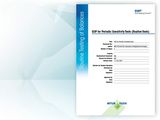Jabir Ibn Hayyan (nacido el 721 (?) en Tus, Irán - muerto el 815 en Kufa, Iraq), su nombre completo era Abu Musa Jabir Ibn Hayyan Al-Azdi (أبو موسى جابر بن حيان الأزدي), y fue un alquimista de origen persa.[1] [2] [3] [4] [5] [6] [7] [8] [9] [10] [11] [12] [13] Conocido también como Geber, forma latinizada de su nombre. Se le considera el padre de la química, por haber sido el primero en haberla estudiado de forma científica.
Conocimientos adicionales recomendados
Jabir nació hacia 721 en Tus, provincia del Khorassan. Hijo de un farmacéutico de la tribu Azd que fue ejecutado por participar en una conspiración contra el califato Omeya. Fue enviado a Arabia donde estudió matemáticas y fue discípulo del imam shiita Jafar as-Sadiq. Tras este período vivió casi la totalidad de su vida en Kufa, Irak. A pesar de sus inclinaciones al misticismo (fue apodado al-Sufa) y a la superstición, reconocía claramente la importancia de la experimentación: La primera cosa esencial en química, es que se deben llevar a cabo trabajos aplicados y experimentos, ya que aquel que no los realiza jamás alcanzará los más altos grados del conocimiento. Sus trabajos constituyeron avances significativos para la química, tanto en el plano teórico, como en el de la experimentación.
Sus libros influyeron notablemente en los alquimistas europeos. Se le atribuye la paternidad de un gran número de instrumentos de laboratorio, así como el descubrimiento de diversas sustancias químicas, como el ácido clorhídrico y el el ácido nítrico.
Referencias
- ↑ A Dictionary of the History of Science by by Anton Sebastian - p. 241
- ↑ "Jābir ibn Ḥayyān, Abū Mūsā." Encyclopædia Britannica. Ultimate Reference Suite.
- ↑ The Alchemical Body By David Gordon - p. 366
- ↑ The Structure and Properties of Matter by Herman Thompson Briscoe - p. 10
- ↑ The Tincal Trail: A History of Borax by Edward John Cocks, Norman J. Travis - p. 4
- ↑ William Royall Newman, Gehennical Fire: The Lives of George Starkey, an American Alchemist in the Scientific Revolution, Harvard University Press, 1994. pg 94: "According to traditional bio-bibliography of Muslims, Jabir ibn Hayyan was a Persian alchemist who lived at some time in the eight century and wrote a wealth of books on virtually every aspect of natural philosophy"
- ↑ William R. Newman, The Occult and Manifest Among the Alchemist", in F. J. Ragep, Sally P Ragep, Steven John Livesey, "Tradition, Transmission, Transformation: Proceedings of Two Conferences on pre-Modern science held at University of Oklahoma", Brill,1996/1997, pg 178:"This language of extracting the hidden nature formed an important lemma for the extensive corpus associated with the Persian alchemist Jabir ibn Hayyan"
- ↑ Henry Corbin, "The Voyage and the Messenger: Iran and Philosophy", Translated by Joseph H. Rowe,North Atlantic Books, 1998. pg 45: "The Nisba al-Azdin certainly does not necessarily indicate Arab origin. Jabir seems to have been a client of the Azd tribe established in Kufa
- ↑ Tamara M. Green, "The City of the Moon God: Religious Traditions of Harran (Religions in the Graeco-Roman World) ", Brill, 1992. pg 177: "His most famous student was the Persian Jabir ibn Hayyan (b. circa 721 C.E.), under whose name the vast corpus of alchemical writing circulated in the medieval period in both the east and west, although many of the works attributed to Jabir have been demonstrated to be likely product of later Ismaili' tradition."
- ↑ David Gordon White, "The Alchemical Body: Siddha Traditions in Medieval India", University of Chicago Press, 1996. pg 447
- ↑ William R. Newman, Promethean Ambitions: Alchemy and the Quest to Perfect Nature, University of Chicago
Press, 2004. pg 181: "The corpus ascribed to the eight-century Persian sage Jabir ibn Hayyan.."
- ↑ Wilbur Applebaum, The Scientific revolution and the foundation of modern science, Greenwood Press, 1995. pg 44: "The chief source of Arabic alchemy was associated with the name, in its Latinized form, of Geber, an eighth-century Persian. "
- ↑ Neil Kamil ,Fortress of the Soul: Violence, Metaphysics, and Material Life in the Huguenots New World, 1517-1751 (Early America: History, Context, Culture), JHU Press, 2005. pg 182: "The ninth-century Persian alchemist Jabir ibn Hay- yan, also known as Geber, is
accurately called pseudo-Geber since most of the works published under this name in the West were forgeries"
|






